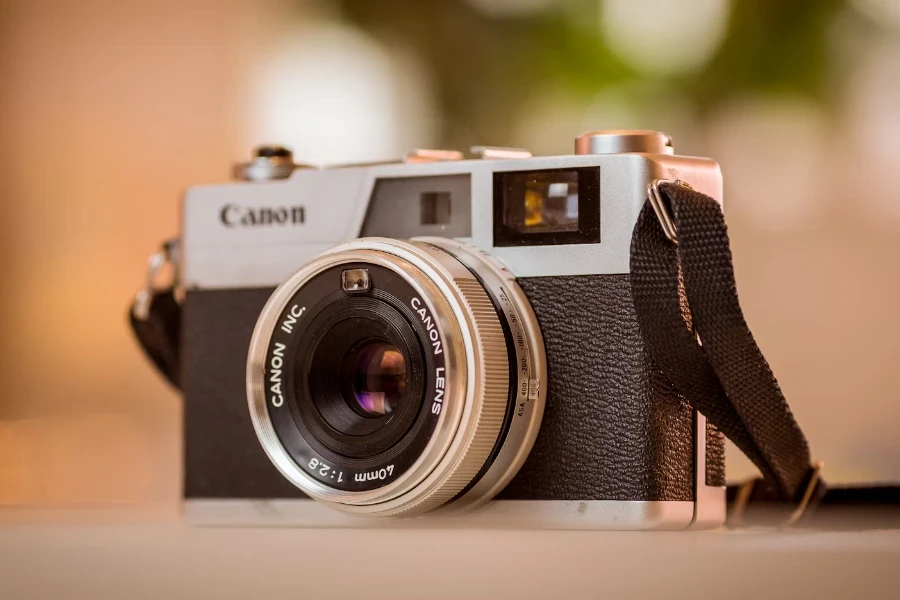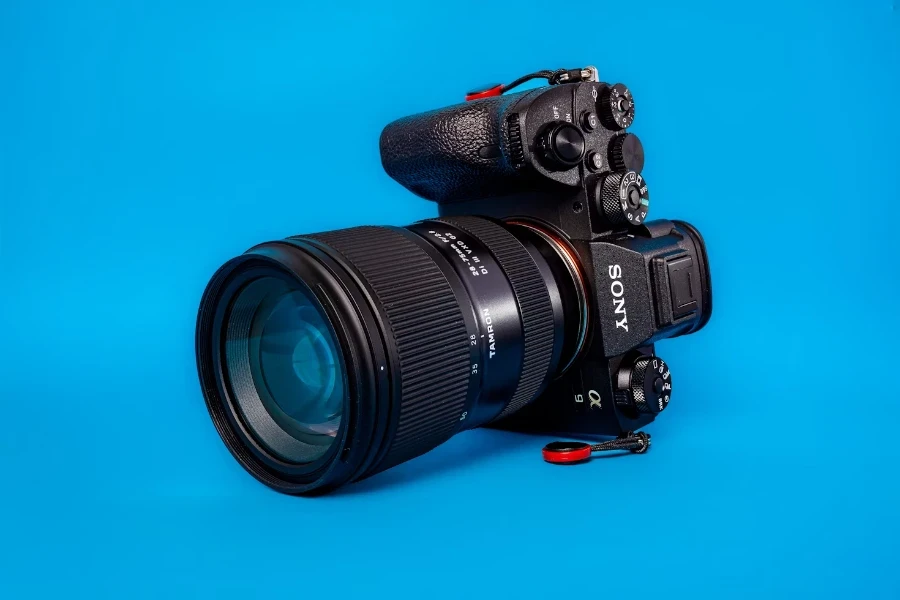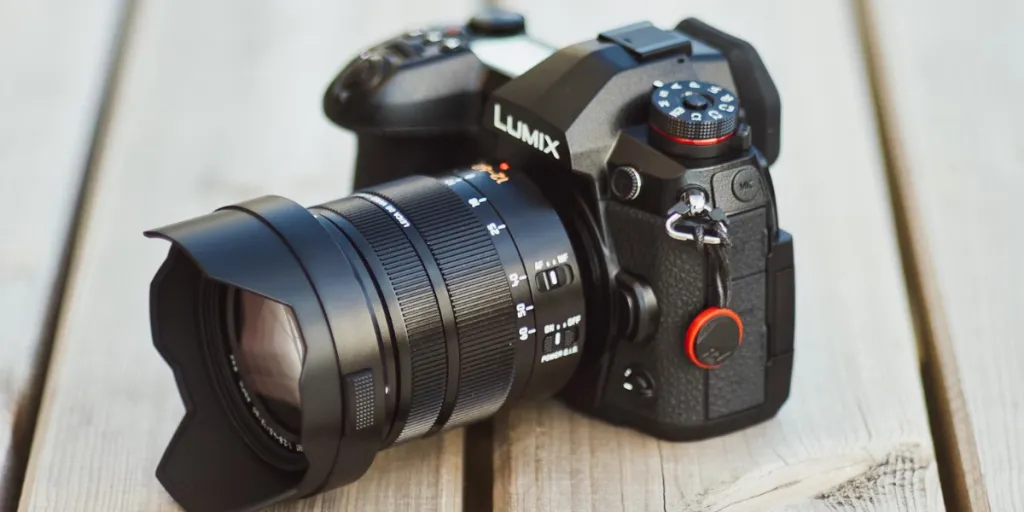Digital cameras have changed the way we tell stories with pictures. They can create and save their photos in very high quality, with bright colors that make them flow smoothly without any stops or breaks. This has not only changed how movies work but also made them something we’ll always remember.
Digital cameras don’t just take photos. They capture every possible part of each moment with great accuracy, recording the strength and light of each event. But with so many options, how do businesses choose the right digital camera? What features should they look at, and what cameras are there? Here are 10 factors to consider before buying a digital camera.
Table of Contents
The global market for digital cameras
10 factors to consider when choosing a digital camera
Deciding on the ideal digital camera
The global market for digital cameras
The ‘Digital Cameras’ sector of the global consumer electronics market is predicted to persistently rise from 2023 to 2028, adding 12.8 million units (+10.62 percent). Following seven successive years of growth, the indicator is set to hit a new record of 133.31 million units in 2028. Look into other essential market indicators, such as the average cost per unit (PPU) and revenue, for better insights into what’s to be expected.
10 factors to consider when choosing a digital camera
Whether you’re the owner of a small or medium-sized business, a wholesaler, a drop-shipper, a retailer, or a processor, possessing the appropriate digital camera can substantially uplift the visual allure of your business. Yet, the extensive variety of choices accessible in the market may make the decision-making process appear daunting.
1. Price
Certainly, price is a significant consideration when making any business acquisition. It can be enticing to simply opt for the most costly camera within your budget. This can be attributed to the assumption that a higher price tag equals superior quality, right?
This isn’t entirely accurate; while there’s some merit to the adage ‘you get what you pay for‘, it’s also true that there are excellent cameras across different price brackets. A more expensive camera might not necessarily align with your specific needs.
An effective strategy when considering cameras and their costs, is to divide them into various price groups.
Under $3,000
These DSLRs and mirrorless cameras will likely double as photography and video devices. This group includes some top-notch models, such as the Sony A7S III. A feature often not available in this price range is RAW video recording.
These cameras typically use some kind of compressed media for recording. It becomes your responsibility to identify the optimal settings to maximize the quality of the recorded image while preserving as much detail and color accuracy as possible.
$3,000 to $10,000
This area has seen a remarkable growth spurt, providing numerous excellent choices in recent years. Within this cost bracket, you will come across various cameras ideal for both conventional filmmaking and broadcasting purposes, including TV news field reporting and interviews (not studio cameras), reality TV, and similar video content.
2. Point-and-shoot or DSLR

A digital single-lens reflex camera (DSLR) is often called a “professional-grade camera.” It’s the camera choice for both professional photographers and passionate amateurs, making them easier to sell. Several factors contribute to its ability to produce superior images compared to other cameras. They include:
- Larger sensors
- Adaptable lenses
- Advanced processing abilities
Point-and-shoot cameras might be more familiar to you. They are smaller and equipped with a retractable lens. They include only an electronic viewfinder, and their image quality doesn’t quite reach the level of a DSLR. Despite this, they stand out for their portability and are substantially more cost-effective.
3. Built-in flash
Having an integrated flash can be handy when additional light is required. Nevertheless, top-tier cameras frequently lack this feature as they are primarily designed for expert photographers who usually favor Speedlites. Including a built-in flash can also complicate attaining the dust- and moisture-resistant waterproofing needed for professional applications.
4. Simplicity and direct controls

The latest camera models are equipped with touchscreens. This simplifies menu navigation and makes features like autofocus easier to manage. However, some buyers might appreciate the practicality and tactile sensation of additional dials and buttons that allow instant setting changes.
Designed with simplicity, the EOS M200 is perfect for those who prefer fewer dials and buttons. Yet, if you wish for more detailed control over certain settings, it would necessitate extra menu navigation.
While the abundance of dials and buttons on advanced cameras such as the EOS 90D may initially appear daunting, familiarity over time can enable quicker responses to changing scenes.
5. Sensor size
When considering a camera for sale, the most significant factors are the sensor’s dimension and each photosite’s size on that sensor. A larger photosite can absorb more light and record more data. The more data directed to the camera’s image processor, the wider the dynamic (tonal) range in the produced image, resulting in improved picture quality.
The variances are especially evident in images shot in bright, high-contrast environments or under low-light conditions. In brightly lit situations, the diminutive sensors of compact digital cameras cannot capture details in the most luminescent and darkest zones. This leads to pictures with overexposed highlights and underexposed shadows. If no detail is captured, modifying the image to rectify the issue becomes impossible.
6. Lenses

Most beginner DSLRs are typically packaged with at least one mid-range zoom lens. However, seeing them sold with two lenses is becoming more common. The second lens is often a telephoto zoom lens, offering a focal length equivalent to approximately 70–200 mm in the 35 mm format.
These dual lens kits offer excellent value, so don’t be deterred by remarks about “inferior optics.” The lenses are usually encased in plastic to reduce weight, with the primary trade-off being lens speed (maximum aperture) instead of actual performance.
While these plastic bodies may not match the durability of metal ones, they’re sturdy enough for regular use and are much easier and lighter to carry around.
7. Speed and performance
When purchasing a camera, most of your buyers will initially consider the file size, or megapixel (MP) value. A higher MP implies a more detailed image that can be printed in larger sizes. Notably, this factor also influences the camera’s cost. Remember the ISO value, which determines the camera’s performance in dimly lit conditions.
A higher ISO means less light is required for good photo quality. If your buyer’s photography isn’t primarily focused on fast-paced subjects like sports or wildlife, then frames per second might not be a top priority. However, for those who do intend to capture such subjects, a higher fps can significantly improve the chances of nabbing that perfect shot.
8. Video performance

Every contemporary digital camera comes equipped with the ability to record video. Some offer high-end features like 4K Ultra HD resolution, while others provide essential video functions. If selling cameras designed for video is the goal, the following key specifications should be kept in mind:
- Frame rates: Standard ratings are 30 fps and 24 fps. 60 fps or higher is best for slow-motion footage.
- Image stabilization: For those not utilizing a tripod, in-body and in-lens image stabilization are important considerations.
- 4K video capability: This enhances image quality, particularly when viewed on a 4K Ultra HD TV.
- External microphone inputs: Optimal audio capture is achieved with external mics.
- Recording duration limits: This specification outlines how much footage can be recorded in a single session.
- Rotatable LCD: This feature minimizes neck strain and simplifies self-recording.
- HDMI output: This allows for recording to external capture devices using an HDMI cable.
Additional attributes include battery longevity, manual shooting modes, automatic modes, high ISO performance, memory slots, wireless connectivity, and touchscreen interfaces.
9. Size and ergonomics
The perception of size can be quite subjective. What a novice might view as large could seem small to a seasoned professional. Compact cameras with closely spaced buttons may feel uncomfortable to operate. The ease of transporting a larger camera should also be considered.
If the intention is to use an existing camera bag, it would be prudent to take measurements to ascertain that the new camera will fit. There are also camera models equipped with grips for enhanced comfort.
10. Availability of the seller
Communicating with the seller can be highly beneficial. You can inquire about the camera’s state or what comes with it, seek additional information or images, negotiate a lower shipping fee if it appears excessive, and so on. If the seller replies promptly and warmly, it’s a positive indication that they are reliable.
Numerous online vendors are infrequent or casual sellers who may lack knowledge about their products. Hence, it is advisable to use the “Contact Supplier” feature during payment to provide instructions on how to pack the camera properly to reduce the risk of damage during transportation.
Deciding on the ideal digital camera
No single digital cinema camera can be deemed “perfect” ; the choice entirely hinges on the filmmaker’s unique requirements and filming approach. Conduct thorough research, consider all the factors mentioned, and be sure to peruse reviews. If feasible, try out a camera and perform your evaluations before deciding on a purchase.
Explore the wide range of digital camera models and the extensive directory of suppliers on Alibaba.com.




